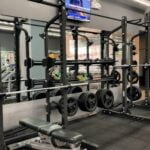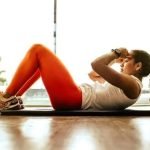Neuromotor fitness exercises focus on the connection between the brain and body, aiming to improve coordination, balance, and agility. These exercises not only benefit physical health but also have a positive impact on brain function. In this section, we will delve into the concept of neuromotor fitness and explore its importance in overall well-being.
Neuromotor fitness encompasses various types of exercises that challenge the nervous system and require coordination between muscles and the brain. Through these exercises, individuals can enhance their motor skills, proprioception, and cognitive function. Understanding the link between neuromotor fitness and overall health is essential for anyone looking to optimize their physical and mental performance.
As we explore the benefits of neuromotor fitness exercises, it becomes evident that they offer more than just physical improvement. These exercises play a crucial role in enhancing cognitive function, reducing the risk of falls and injuries, and promoting overall well-being. By improving neuromotor fitness, individuals can experience increased mobility, better posture, and greater confidence in their movement abilities. This section will delve into how these exercises positively impact coordination, balance, and agility.
The Benefits of Neuromotor Fitness Exercises
Neuromotor fitness exercises offer a wide range of benefits that go beyond physical fitness. They are specifically designed to improve coordination, balance, and agility by targeting the connection between the brain and body. These exercises require focus, concentration, and a combination of movements that challenge both the neuromuscular system and cognitive function.
One of the key benefits of neuromotor fitness exercises is the improvement in coordination. These exercises involve complex movements that require the brain to send signals to different parts of the body simultaneously. As a result, individuals who regularly engage in neuromotor fitness activities experience enhanced motor skills and better overall coordination in their daily activities.
Additionally, neuromotor fitness exercises have been proven to improve balance and stability. The focus on integrating movement patterns with cognitive function helps individuals develop a stronger sense of balance, reducing the risk of falls or injuries. This is especially beneficial for older adults who may experience a decline in balance as they age.
Furthermore, these exercises also contribute to increased agility. By engaging in activities that require quick changes in direction, speed, and reaction time, individuals can enhance their overall agility and responsiveness. This is particularly useful for athletes or individuals looking to improve their performance in sports or other physical activities. Overall, incorporating neuromotor fitness exercises into a workout routine can lead to significant improvements in coordination, balance, and agility while also promoting brain health and function.
| Benefits | Improvements |
|---|---|
| Coordination | Enhanced motor skills and better overall coordination |
| Balance | Reduced risk of falls or injuries through improved balance and stability |
| Agility | Increased overall agility and responsiveness through quick changes in direction, speed, and reaction time |
Getting Started With Neuromotor Fitness
Essential Equipment
One of the simplest and most effective pieces of equipment for neuromotor fitness exercises is a stability ball. This versatile tool can be used for a wide range of exercises that challenge balance and coordination. Additionally, resistance bands are a great option for adding strength training to your neuromotor fitness routine.
They come in various levels of resistance, making them suitable for individuals of all fitness levels. A balance board or wobble board is another essential piece of equipment that can help improve proprioception and stability.
Safety Precautions
Before beginning any neuromotor fitness regimen, it’s crucial to consult with a healthcare professional, especially if you have any existing health conditions or concerns. When performing neuromotor exercises, always ensure that you have a clear and open space free from obstacles that could pose a tripping hazard.
Take precautions when using equipment such as stability balls and balance boards to prevent falls or injury. It’s also important to start slowly and gradually increase the intensity of your workouts to avoid overexertion.
Proper Footwear
Wearing proper footwear is essential for safety during neuromotor fitness exercises. Choose shoes with good ankle support and non-slip soles to provide stability during movements that challenge balance and coordination. Avoid wearing shoes that are too loose or have worn-out treads as these can increase the risk of slipping or falling during exercises.
By understanding the essential equipment needed for neuromotor fitness exercises and taking necessary safety precautions, individuals can begin their journey towards improved coordination, balance, and agility while minimizing the risk of injury.
Top 5 Neuromotor Fitness Exercises for Beginners
When it comes to neuromotor fitness exercises, beginners may feel a bit intimidated at first. However, these exercises are not only beneficial for improving coordination, balance, and agility but can also be enjoyable and rewarding. Before diving into the top 5 neuromotor fitness exercises for beginners, it’s important to understand what neuromotor fitness is all about.
Neuromotor fitness involves activities that enhance an individual’s neuromuscular system, which includes the brain, spinal cord, and nerves that control muscle movement. It focuses on improving functions such as balance, coordination, gait, posture control, and agility. Through a combination of strength, flexibility, balance, agility, coordination exercises such as yoga or tai chi can benefit both physical and cognitive function.
Getting started with neuromotor fitness exercises for beginners does not require any special equipment. Often bodyweight movements or simple tools like resistance bands and stability balls are enough to begin with. To ensure safety while performing these exercises for the first time individuals should be in a clear space without any obstructions or hazards nearby.
| Exercise | Description |
|---|---|
| Balance exercises | This exercise focuses on standing on one foot or heel-to-toe walking to improve balance. |
| Coordination drills | These include activities like jumping jacks or ladder drills to enhance timing and rhythm. |
| Agility training |
Advanced Neuromotor Fitness Exercises
Once you have mastered the basic neuromotor fitness exercises, it’s time to take your workout to the next level by incorporating more advanced movements that challenge both your brain and body. These exercises are designed to further improve coordination, balance, and agility while also enhancing cognitive function. By adding complexity and intensity to your neuromotor fitness routine, you can continue to reap the benefits of these unique exercises.
Coordination Challenges
One way to advance your neuromotor fitness regimen is by incorporating coordination challenges into your workouts. This could include activities such as juggling, rope jumping, or agility ladder drills. These exercises require precise timing, focus, and quick reflexes, all of which can help improve both neuromuscular coordination and cognitive abilities.
Balance Enhancements
Another aspect of advanced neuromotor fitness exercises involves enhancing your balance through more challenging movements. This could involve standing on one leg while performing upper body movements, using a wobble board or Bosu ball for stability training, or practicing yoga poses that require greater strength and stability. Improving balance not only benefits physical performance but also helps prevent falls and injuries, especially in older adults.
Cognitive Complexity
In addition to physical challenges, advanced neuromotor fitness exercises often include cognitive complexity to further engage the brain. This could involve incorporating memory games into your workout routine, performing complex dance routines that require memorization of choreography, or engaging in dual-task activities that require simultaneous problem-solving and movement execution. By integrating cognitive challenges into your workouts, you can enhance neuroplasticity and improve overall brain function.
By incorporating these advanced neuromotor fitness exercises into your workout routine, you can continue to push yourself physically and mentally while reaping the many benefits of improved coordination, balance, and agility.
Integrating Neuromotor Fitness Into Your Workout Routine
To effectively integrate neuromotor fitness exercises into your workout routine, it’s important to understand the benefits and essential tips for incorporating these exercises. Neuromotor fitness exercises focus on improving coordination, balance, agility, and proprioception, which are all crucial for overall physical function. Here are some tips for seamlessly integrating neuromotor fitness exercises into your daily regimen:
1. Start Slow: If you’re new to neuromotor fitness exercises, start slowly and gradually increase the intensity and complexity of the movements. This will help prevent injury and allow your body to adapt to the new challenges.
2. Stay Consistent: Like any other form of exercise, consistency is key when it comes to neuromotor fitness. Aim to incorporate these exercises into your workout routine at least 2-3 times per week to see improvements in your balance and coordination.
3. Mix It Up: Don’t be afraid to mix up your neuromotor fitness exercises by incorporating different types of movements such as yoga poses, tai chi, single-leg balances, and agility drills. This will keep your workouts fun and challenging while targeting different aspects of neuromotor fitness.
4. Incorporate it Into Your Warm-Up or Cool Down: Including neuromotor fitness exercises as part of your warm-up or cool down routine can help improve mobility and prevent injuries during more intense workouts. For example, practicing simple balance exercises or dynamic stretches can help prepare your body for the main workout.
5. Seek Professional Guidance: If you’re unsure about how to properly perform neuromotor fitness exercises or want to ensure that you’re doing them safely and effectively, consider seeking guidance from a certified personal trainer or physical therapist with experience in neuromotor training.
By following these tips, you can easily incorporate neuromotor fitness exercises into your regular workout routine while reaping the many benefits they have to offer for brain health and physical function.
Neuromotor Fitness for Different Age Groups
Neuromotor fitness exercises are beneficial for individuals of all age groups. Adapting these exercises to suit the needs and capabilities of different age groups ensures that everyone can enjoy the benefits of improved coordination, balance, and agility.
For children, neuromotor fitness exercises can be incorporated into playtime activities. Simple activities such as hopscotch, jumping rope, or playing catch can help children develop their neuromotor skills while having fun. Additionally, organized sports like soccer, gymnastics, or martial arts can also provide an excellent opportunity for children to improve their neuromotor fitness.
Adults can benefit from neuromotor fitness exercises by incorporating activities that challenge both their physical and cognitive abilities. Tai chi, yoga, or dance classes are great options for improving balance and coordination while also providing mental stimulation. Additionally, strength training exercises using stability balls or balance boards can help adults enhance their neuromotor skills.
For seniors, it is essential to focus on exercises that improve mobility and reduce the risk of falls. Chair yoga, gentle stretching routines, and water aerobics are excellent choices for seniors to enhance their neuromotor fitness in a safe and effective manner. It is important for seniors to work with a qualified instructor who can tailor exercises to their specific needs and limitations.
Overall, adapting neuromotor fitness exercises for different age groups is essential in promoting lifelong physical and cognitive health. By incorporating these exercises into daily routines from childhood through aging adulthood, individuals can maintain and improve their neuromotor fitness over time.
The Science Behind Neuromotor Fitness
In conclusion, the science behind neuromotor fitness exercises sheds light on the significant impact they have on brain health and function. Through the integration of activities that challenge coordination, balance, and agility, individuals can experience improvements in cognitive function and overall well-being. These exercises have been shown to promote neural connections within the brain, leading to enhanced motor skills and a sharper mind.
Moreover, incorporating neuromotor fitness exercises into your workout routine can bring about numerous benefits for people of all ages. Whether you are a beginner looking to improve basic motor skills or an advanced athlete seeking to take your training to the next level, there are exercises tailored to suit your needs. With proper guidance and safety precautions in place, individuals can embark on a journey towards better physical and mental health through neuromotor fitness activities.
As research continues to explore the connection between the brain and body, it becomes increasingly clear that neuromotor fitness exercises play a vital role in maintaining overall well-being. By understanding how these exercises impact brain health and function, individuals can make informed choices about their fitness regimen. With dedication and consistency, anyone can reap the rewards of improved coordination, balance, agility, and cognitive function through neuromotor fitness exercises.
Frequently Asked Questions
What Is Neuromotor Exercise Training?
Neuromotor exercise training involves activities that focus on improving balance, coordination, agility, and proprioception. These exercises often involve complex movements that challenge both the body and the brain, such as tai chi or yoga.
How Often Should You Do Neuromotor Exercise?
The frequency of neuromotor exercise depends on individual fitness levels and goals. However, it is generally recommended to incorporate neuromotor exercises into your routine at least 2-3 times per week to see improvements in balance and coordination.
How Many Days Per Week Is Neuromotor Exercise Training Typically Recommended?
Typically, neuromotor exercise training is recommended for at least 2-3 days per week for optimal results. This allows for adequate time to challenge and improve neuromuscular coordination without overexerting the body. Consistency is key in seeing progress in neuromotor abilities.

Passionate about providing useful information to anyone with an interest in the field of Personal Training, I strive to pass on to our readers quality information and to answer any questions about Personal Trainers, the work they do and how to become one.





